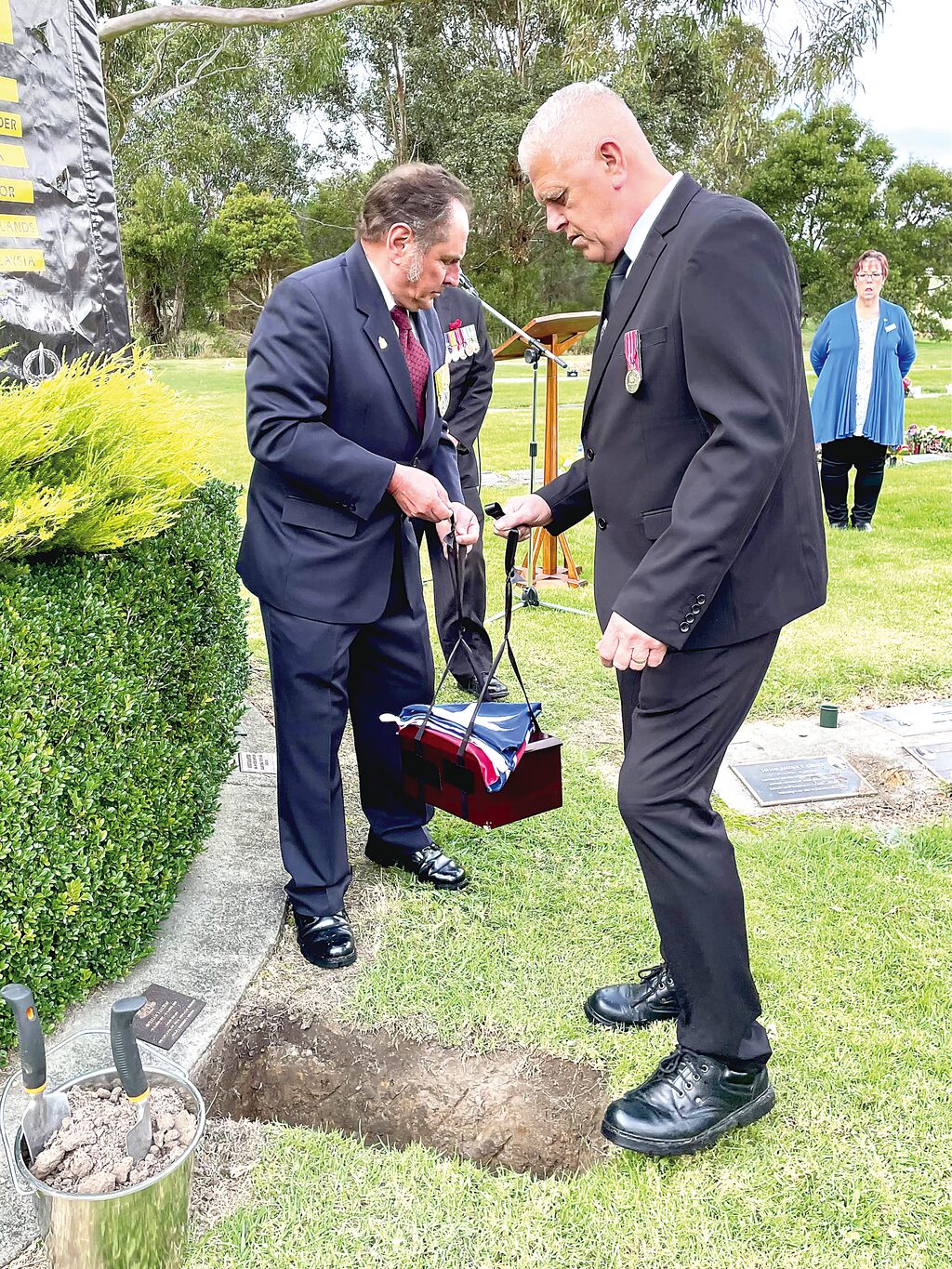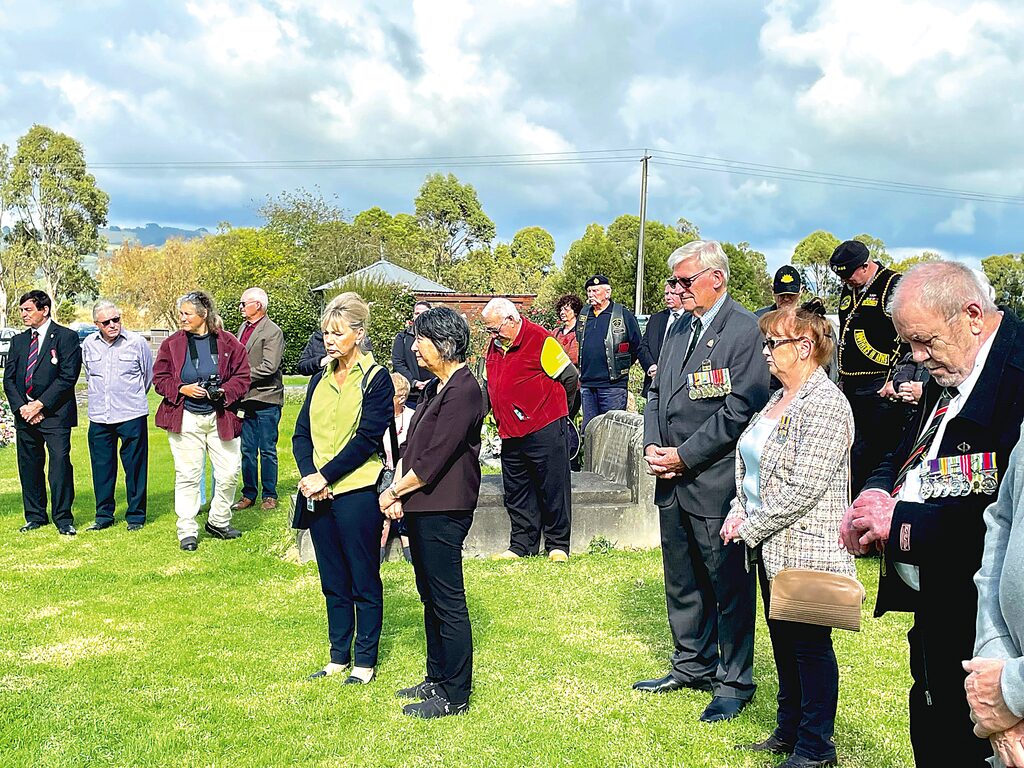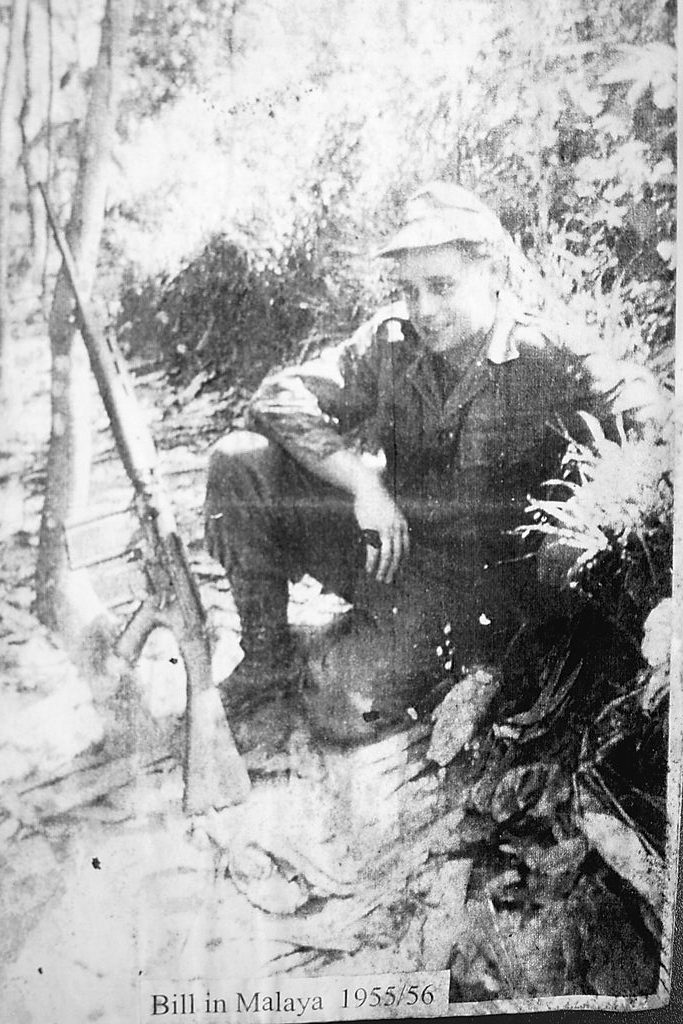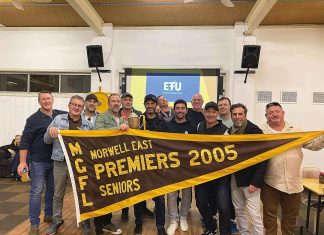By ZAIDA GLIBANOVIC
We will remember them.
AUSTRALIAN Digger William Halliday is now at peace after an unsuccessful, yet extensive search to uncover his family.
Last year, the Trafalgar-Thorpdale RSL Branch received a mysterious box that appeared to contain an ex-servicemen’s ashes. The ashes, which were found sitting in a local garage, have now found a burial place in Yarragon Cemetery.
Private Halliday was finally given closure after 16 years lost, with a dignified military funeral service on Tuesday, April 16, fittingly before Anzac Day.
Many from the RSL sub-branch came along to pay their respects to the soldier as he was buried in a plot donated by the Yarragon Lawn Cemetery Trust.

When Private Halliday’s remains were given to the team at the RSL, they took it upon themselves to tell Private Halliday’s story and find his family.

Trafalgar-Thorpdale RSL Secretary, Paul Altamore said bringing Private Halliday to peace was a collaborative effort between Latrobe Regional Health, 2 RAR Historical Collection in Townsville and the local RSL.
“I think that anyone who has served their nation, whether it be the Navy, Army, Air Force, or any first responders, put their life ahead of others, they deserve some recognition,” he told the Express.
The RSL appeals officer and local history buff, Tracey Chambers, tracked down a funeral notice in the Latrobe Valley Express, posted by the Moe RSL, confirming his dates of birth and death.
Through more research, Mr Altamore found that Mr Halliday was born in Scotland in 1927.
In April 1951, Mr Halliday enlisted in the Australian Regular Army in London and joined the 2nd Battalion, the Royal Australian Regiment.
Mr Altamore explained how service records weren’t so common during Private Halliday’s time, but it wasn’t uncommon for someone to laterally transfer, “and this would have explained why he came to Australia unaccompanied,” Mr Altamore said.
The RSL was also handed a second, smaller box alongside Private Halliday’s ashes, that bore a plaque inscribed with “Lady” – believed to be a beloved pet dog – along with the photos of a man in uniform, with one titled “Bill in Malay 1955-1956”.
Malayan campaign service medal records confirmed the photos were of Private Halliday. Records showed Private Halliday’s service number was 3/10499, and he was in the Charlie Company, 2nd Battalion Royal Australian Regiment, where he served as a light machine gunner.
Service records indicate Mr Halliday was awarded the British General Service Medal with class Malaya and the return from active service badge. He went on to serve in the Army until his discharge on April 30, 1957.
“The Malayan Emergency lasted 12 years, from 1948 to 1960, and it’s one of Australia’s forgotten campaigns, but we like to think there are no forgotten soldiers,” Mr Altamore said.

Before serving in both British and Australian forces, Mr Halliday’s service records describe him as a day labourer, and when building a life in Australia after his service, he worked as a tram conductor and postman.
Through a bit of research, Deborah McKeown, freedom of information officer at Latrobe Regional Health, found Mr Halliday loved to barrack for the Bombers, place a few bets and play with his dogs.
A long-time patient in the Erica Ward, Mr Halliday, died on March 13, 2008.
Working alongside Mr Altamore, Ms McKeown helped find information about Private Halliday.
“I was able to go back through our records, and I did locate some files. With a little bit of information from the album that was handed in with the ashes, I was able to 100 per cent identify that I did have the right person,” Ms McKeown said.
Identifying Mr Halliday and his service was the easy part, but locating his family would prove to be a challenge.
Mr Altamore said no one in Yarragon had heard of the former Digger, nor was he connected to any local Hallidays. There were also no records in the local shire retirement villages or cemeteries.
“In terms of next-of-kin, we didn’t have anyone that we could find locally,” Ms McKeown said.
Documents found Mr Halliday had two siblings in Scotland and an older cousin living in Melbourne, all since deceased.
“We set about doing internet searches; I rang phone numbers that I could that were in the file, but unfortunately, we came to a bit of a block, and we weren’t able to establish any further connections with him,” Ms McKeown added.
Around 35 people attended Mr Halliday’s burial ceremony, each person laying a poppy as a symbol of remembrance of his service.
“It’s been wonderful to be able to take part in bringing some closure to this soldier and respectfully laying him to rest, which he absolutely deserved,” Ms McKeown said.
“It’s been an honour, actually, quite moving, and the ceremony has been just beautiful.”
Mr Altamore said that all those who put on the uniform to put their country before their own needs deserve to be treated with dignity. He was relieved that with some group research, they could help Mr Halliday find peace in his final resting place.












